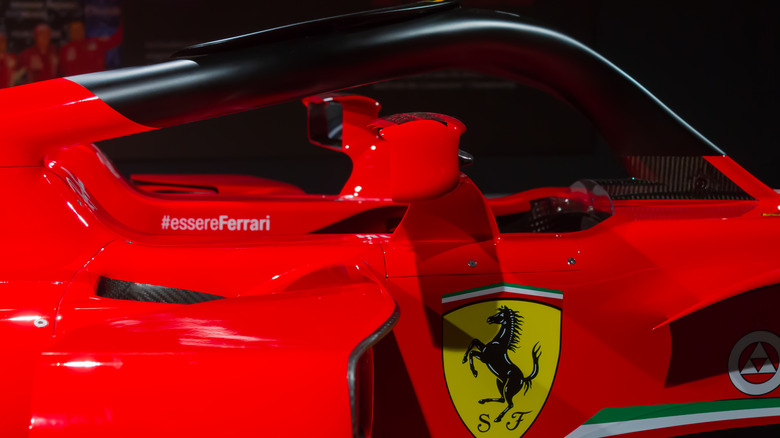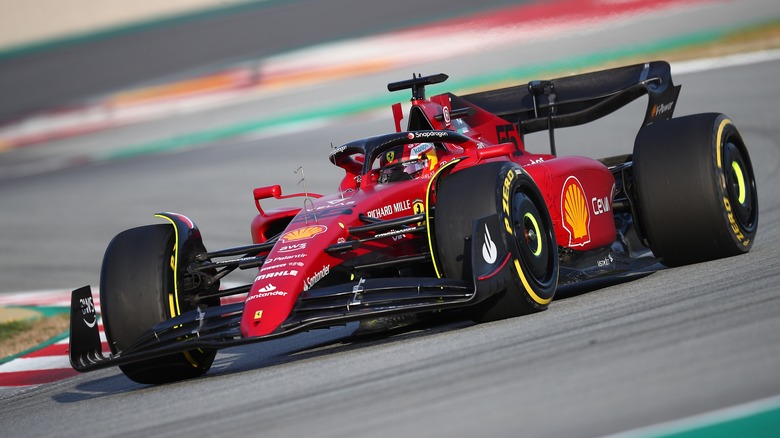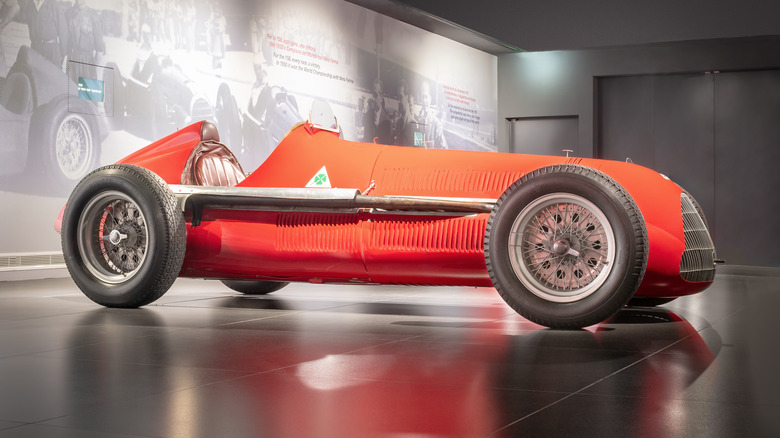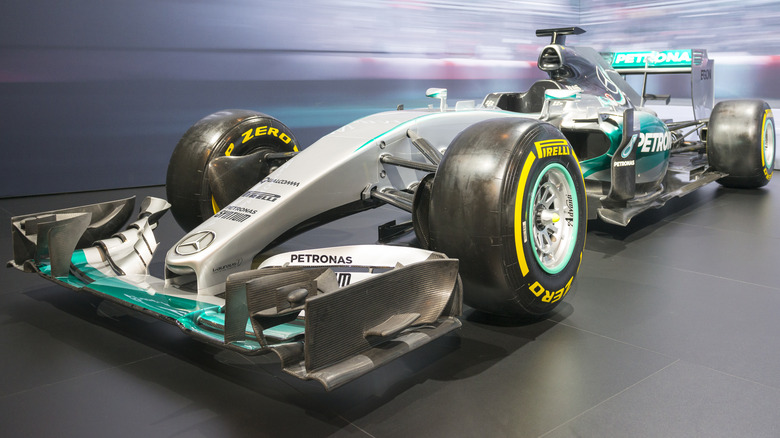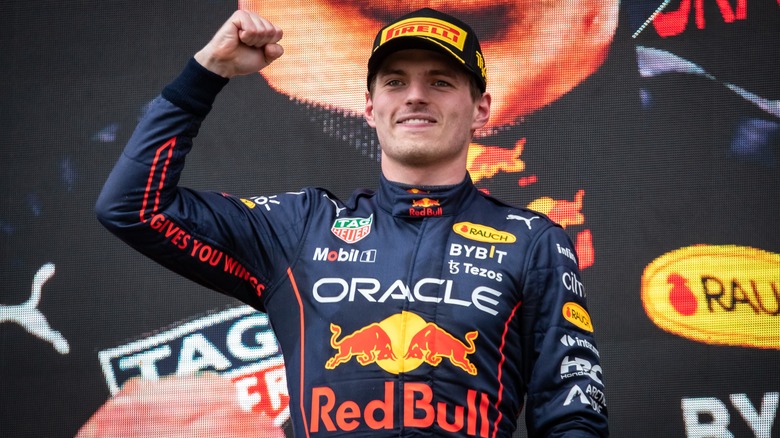How F1 Racing Has Changed Over The 70 Years Since Its First Race
Auto lovers around the world are irresistibly drawn to Formula 1. It's easy to see the appeal: the atmosphere, the shriek of the engines, the chance to admire some of the most magnificent and advanced cars on the planet ... nothing else comes close. For so many who spent their childhood making vroom vroom sounds from inside a toy car, just watching Formula 1 is the realization of a dream.
The elite competition has a long and proud legacy, with the 70th Anniversary Grand Prix being held over the weekend of August 7-9 2020. The huge event took place at Silverstone (where else), and the ultimate victor was Max Verstappen and Red Bull.
For younger fans, the glitz, glamor, and enormous sponsorships on full display that weekend defined everything they've always known Formula 1 to be about. Some who watched that historic race, however, will have remembered a time when F1 was a very different affair. Let's take a look at how the race itself, the cars, the superstar drivers, and the fans have evolved over the course of more than seven decades.
Red Bull cites mid-1880s France as the place where organized motor racing (to some degree or other) seemed to begin. It would be around seventy years before the first official Formula 1 race took place in 1950, and it was a very different beast to the one millions enjoy today.
Attendance for the very first F1 championship race was relatively modest
Silverstone was the setting for the world debut Formula 1 race that constituted part of the wider championship, in May of 1950. Then, as now, it was a much-anticipated and prestigious event, attracting a crowd of around 120,000. The guests of honor were King George VI and Queen Elizabeth themselves.
A program from the event in 1950 proudly proclaimed, "It is to be hoped that this race will find favour with Their Majesties and with all who have gathered here today or who may be listening to this event 'on the air,'" emphasizing that those who did not attend the race had very limited options to enjoy it. Three years later, the BBC broadcasted the British Grand Prix of 1953, the first time they would do so.
Television (alongside streaming services of course) has become monstrously popular and has brought Formula 1 to legions of fans in a way the organizers of the 1950 British Grand Prix surely could never have imagined. The most-viewed championship race ever was 2022's Miami Grand Prix, the event's debut: 2.6 million viewers in the United States tuned in to watch. 2023's British Grand Prix, meanwhile, hit 480,000 attendees, and the 1995 event in Australia topped even that at 520,000. These are all weekend figures, rather than for the race alone, but it's clear that Formula 1 has grown exponentially since its inception.
The performance of the top cars has advanced dramatically
The main attraction of Formula 1 for many is, quite understandably, the chance to watch the cars in action. These magnificent racing machines, developed by the world's most elite garages, are poetry in motion. Have they always been that way, though? What did a Formula 1-winning car look like in 1950?
Alfa Romeo's iconic 158 was the most successful of them, dominating the field and romping home to victory in every race it entered that year. The sleek and historic GP Tipo 158 Alfetta had been winning races since 1938's Coppa Ciano, sporting 232 kph speed and 195 horsepower. It absolutely outclassed its competition and went through a series of refinements as the extent of its potential became clear to its designers. By the time of Nino Farina's victory in the 1950 British Grand Prix, the Alfetta's superchargers had been ... supercharged again, reaching an output of 290 kph and 350 horsepower.
Fast forward to 2023 and the majority of Grand Prix were also won by a particular stand-out vehicle (and most in the hands of Max Verstappen): Red Bull's RB19. This six-cylinder powerhouse tops out at 15,000 rpm, weighs 150 kg, and hits 900 hp, reaching speeds in excess of 343 kph.
The outlook of competing teams
When true Formula One championship racing began, the majority of the competition was reliant on vehicles that were created for a different class of racing tournament, all of which were forced into a long hiatus by the outbreak of the devastating World War II. Late-30s Grand Prix contender Tipo 158 Alfetta was the exception. This would become a primary focus of the development of Formula One: The best-performing cars would be those that pushed their capacities as far as possible and were purpose-built for specific circuits.
Such is the case with the RB19. Every aspect of the vehicle was maximized (or minimized in some cases) in the name of performance. As Ted Kravitz of Sky Sports F1 puts it, the vehicle's "aerodynamic design has very low underlying drag," and this philosophy is coupled with the obvious fact that "the lighter your car is, the faster you will go."
It's natural that technological leaps and bounds will be reflected in the types of vehicles that have taken to the grid over the decades, but so too is a greater understanding of aerodynamics and every other aspect of racing. A serious, professional sport that has risen to become a global phenomenon demands nothing less. In a clear demonstration of this, Forbes reported in March 2023 that Formula One as a whole had made $2.573 billion in 2023, an increase from 2021's total of $2.136 billion.
The rules and regulations
Any long-running sport is bound to accrue a range of official regulation changes along the way. Some will be rather subtle, while others might fundamentally alter significant aspects of the action. Given the high-octane nature of Formula One, these changes have often focused on one simple aspect: driver safety. The motorsport has been marred by tragedy, after all.
It wasn't until the 1960s that safety regulations such as measures to protect drivers against fires in cars were "recommended," and protective helmets became mandatory. The scoring system has been revised a total of five times since the championship began, too, with the top-placed racer's reward increased from 8 points in the beginning to 25 now. The number of competitors receiving a points payout for a race has also doubled, from five to 10.
In February 2022, regulations were implemented that, among other things, ensured no engine changes would be made for the next several years. As a whole, The Race reports, Adrian Newey deemed that year's changes to constitute "the biggest single regulation change we've had since the old ground effect venturi cars were banned at the end of 1982." Even and especially for Formula One veterans, the motorsport is incredibly dynamic, changing and adapting as time goes on. It's always done so, and it always will.
